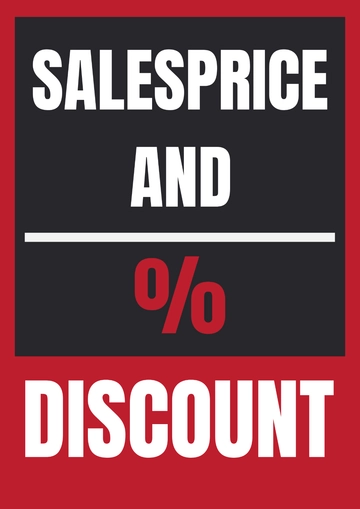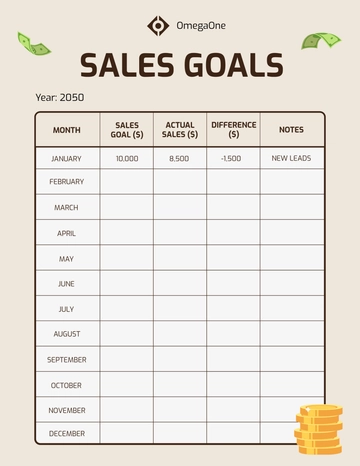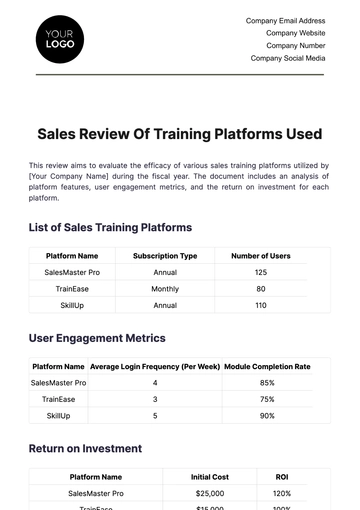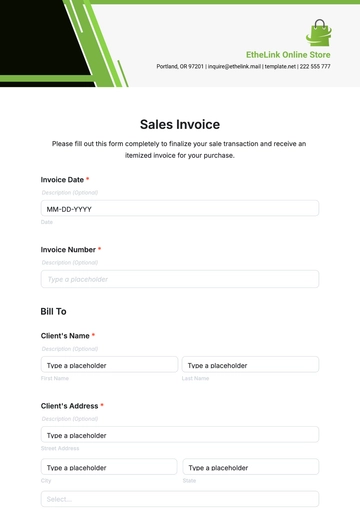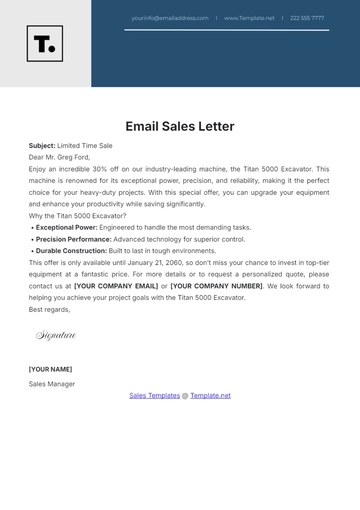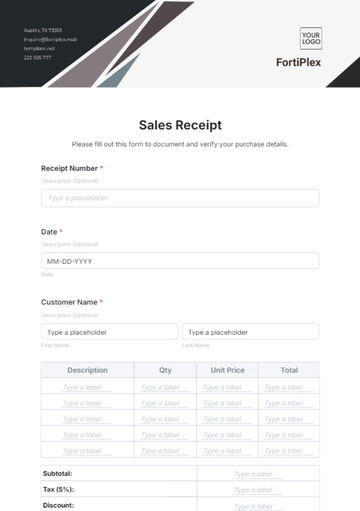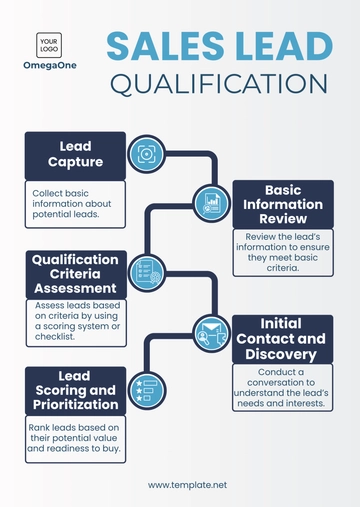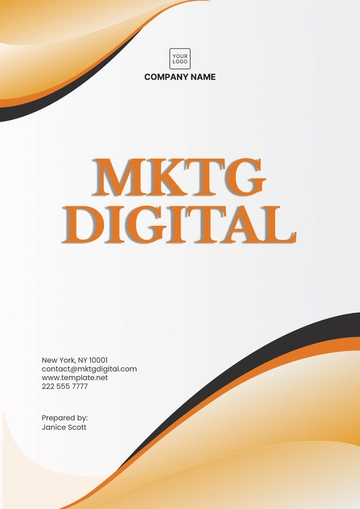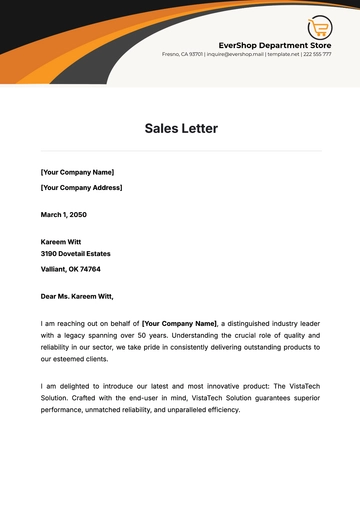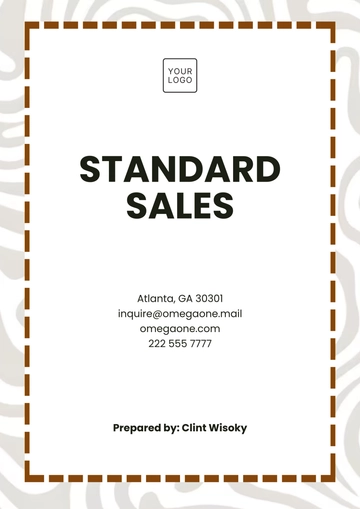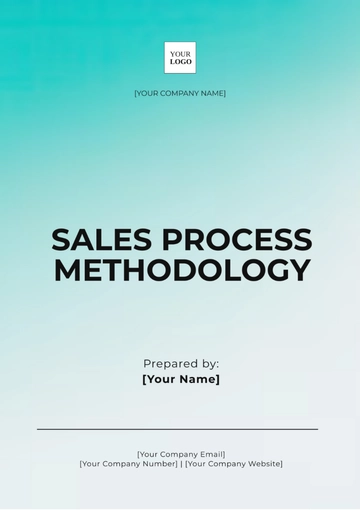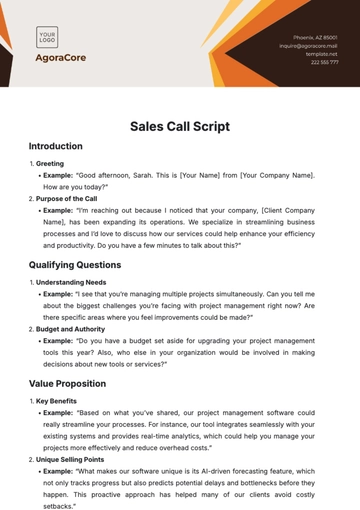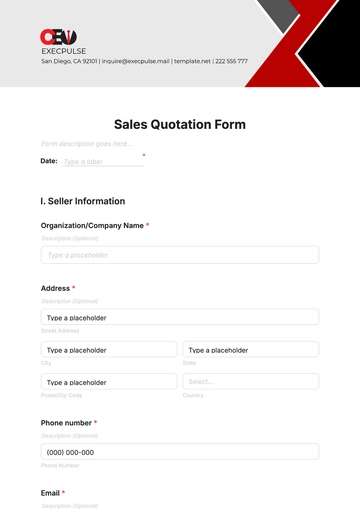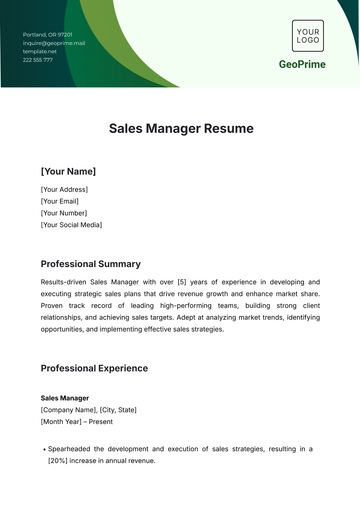Free Sales Management Strategy for Deal Renewals
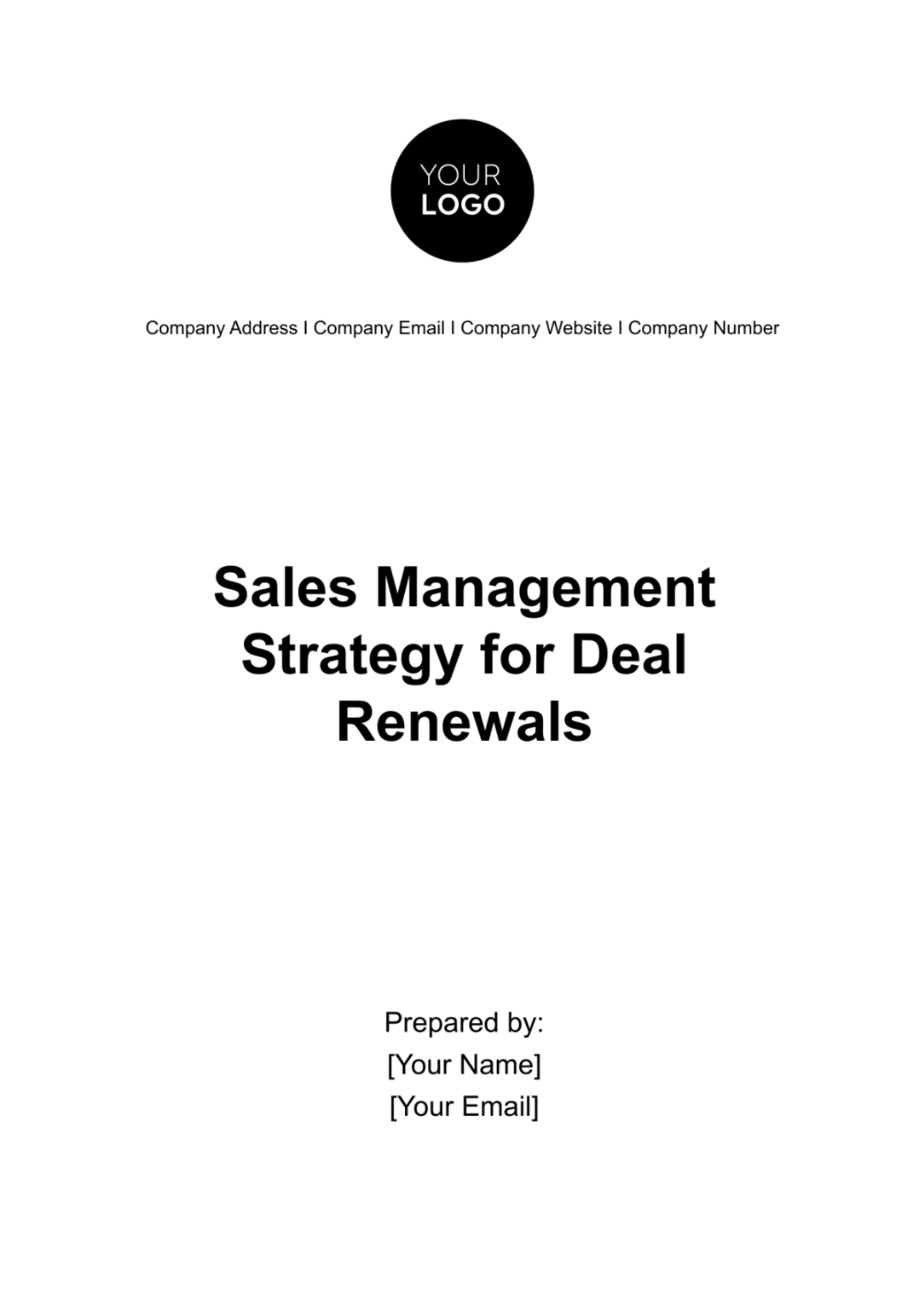
1. Introduction
1.1 Overview
In the highly competitive landscape of sales, successfully managing deal renewals is a critical aspect of maintaining long-term customer relationships and revenue stability. The "Sales Management Strategy for Deal Renewals" is a comprehensive guide that offers a systematic approach for sales teams to navigate the complex process of renewing customer contracts. This strategy encompasses data-driven analysis, customer segmentation, personalized communication, and strategic negotiation to ensure a higher renewal success rate.
1.2 Purpose of the Document
The primary purpose of this document is to provide a structured and strategic approach for sales management and teams to effectively handle deal renewals. By offering clear guidance on the processes and best practices involved in the renewal cycle, this document serves as a valuable resource for sales professionals seeking to enhance their renewal success rates.
1.3 Document Scope
The scope of this document is broad, covering all aspects of the deal renewal process, from initial customer data analysis to the finalization of the renewal agreement. It is designed to be utilized by sales management, teams, and all individuals involved in the renewal process.
1.4 Definitions
Deal Renewal: The process of extending or re-negotiating an existing customer contract, often involving the continuation of services or products.
Customer Segmentation: The practice of categorizing customers based on specific criteria, such as contract value, industry, or contract history.
KPIs: Key Performance Indicators used to measure and evaluate the success of the renewal strategy.
2. Deal Renewal Process
2.1 Customer Data Analysis
A fundamental step in the deal renewal process is the in-depth analysis of customer data. This involves a comprehensive examination of the customer's history, including previous contract performance, product or service usage, payment history, and any prior interactions. The objective is to understand the customer's needs, preferences, and behavior patterns, which will inform the renewal approach.
2.2 Renewal Timing and Triggers
Determining the ideal timing for initiating the renewal process is crucial. This requires the identification of renewal triggers, such as contract expiration dates, which should trigger timely notifications. By creating a system that ensures timely engagement, you increase the likelihood of successful renewals.
2.3 Deal Assessment
Before engaging the customer, it's imperative to assess the current deal's status. This assessment involves a thorough review of the customer's existing contract, taking into account factors like their current product or service usage, satisfaction levels, and any existing issues or challenges that require attention.
2.4 Customer Engagement
Engaging with the customer is a pivotal stage in the renewal process. It necessitates proactive and personalized communication, allowing you to fully comprehend the customer's needs and expectations.
During this phase, the focus should be on active listening, understanding the customer's pain points, and crafting renewal options that align with their specific requirements. Building rapport and trust is essential in this stage.
3. Customer Segmentation
3.1 Segmentation Criteria
Customer segmentation is a critical strategy for tailoring renewal approaches. It involves defining specific criteria for categorizing customers based on their contract value, industry, historical behavior, or other relevant factors. These criteria are essential in creating a framework for customized renewal approaches.
3.2 High-Value vs. Low-Value Customers
One of the key aspects of customer segmentation is distinguishing between high-value and low-value customers. High-value customers, who contribute significantly to your business, may warrant more personalized attention and customized renewal offers. In contrast, low-value customers may follow more streamlined renewal processes.
3.3 Tailored Approaches
Once customer segments are defined, the next step is to create tailored renewal strategies for each segment. These strategies should consider the unique characteristics and needs of each segment, enabling a more effective approach for engaging and renewing customers.
4. Renewal Offers and Incentives
Renewal offers and incentives are the linchpin of the deal renewal process. This section explores the intricacies of offer development, pricing strategies, value-added services, and negotiation tactics, all aimed at optimizing renewal outcomes.
4.1 Offer Development
Offer development is a nuanced process that demands a deep understanding of the customer's specific needs and expectations. The renewal offer should not only retain the customer but also add substantial value. Here's a closer look at its components:
Customer-Centric Approach: Each renewal offer should be crafted with the individual customer in mind. Consider their past usage, feedback, and any shifts in their business needs. For instance, if you're renewing a software subscription, the offer may include a tailored package with features that address the customer's evolving requirements.
Value Emphasis: The offer should clearly communicate the value the customer will receive upon renewal. Whether it's through cost savings, enhanced services, or extended support, the value proposition should be front and center.
Inclusivity: Where possible, offers can incorporate elements that encourage customer loyalty and make them feel valued. This might include access to exclusive webinars, priority support, or loyalty discounts.
For instance, a company offering cloud-based storage services observed that customers who needed increased data storage received personalized renewal offers with progressively lower rates per gigabyte as they scaled their storage. This data-driven approach led to a 20% increase in renewal rates among this customer segment.
4.2 Pricing Strategies
Pricing strategies wield substantial influence over a customer's decision to renew. Leveraging competitive and customer-centric pricing tactics can be a game-changer. These strategies may encompass:
Early Renewal Discounts: Offering discounts for customers who renew their contracts before the expiration date can be a powerful motivator. For example, a software company found that a 15% early renewal discount led to a 40% increase in on-time renewals.
Volume-Based Pricing: For businesses with tiered service or usage levels, volume-based pricing offers can encourage customers to scale their usage. A tiered pricing structure with cost advantages for higher volumes can incentivize customers to commit to larger contracts.
Bundling Options: Bundling related services or products together into a single, cost-effective package can be an attractive proposition. For example, a telecommunications provider bundled internet and cable services, resulting in a 25% increase in customers who renewed both services.
4.3 Value-Added Services
Incorporating value-added services into renewal offers can substantially enhance the customer experience and create additional value. These services may encompass:
Training: Offering training sessions to ensure customers make the most of their products or services can significantly boost customer satisfaction and loyalty. For instance, a software company offered complimentary online training sessions to its customers, leading to a 15% increase in renewal rates.
Premium Support: Elevating support to a premium level with faster response times, dedicated account managers, or 24/7 support can sway customers towards renewal. An IT services provider introduced premium support options and witnessed a 30% increase in renewal rates among customers who opted for this service.
Additional Features: Providing additional features or functionalities can make the renewal offer more enticing. For instance, a marketing automation platform introduced new features with each renewal, leading to a 10% increase in customer retention.
4.4 Negotiation Tactics
Effective negotiation tactics are indispensable for managing deal renewals. This includes having a structured approach to addressing customer concerns and objections to reach win-win outcomes. Let's delve into some of the fundamental elements of negotiation tactics:
Objection Handling: Sales teams need to be equipped to handle common customer objections effectively. This includes addressing concerns about pricing, functionality, or the need for additional services. For example, a customer might express concerns about the cost of a premium support package. The sales professional can navigate this objection by highlighting the reduced downtime and faster issue resolution that customers with premium support experience, thereby justifying the cost.
Win-Win Negotiation: A successful negotiation should result in a win-win outcome where both the customer and the organization benefit. This can be achieved by understanding the customer's needs, exploring various solutions, and arriving at a compromise that suits both parties. For instance, in a negotiation over contract terms, a compromise can be reached where the customer gets extended payment terms, while the organization secures a longer commitment.
Effective negotiation tactics aren't about overpowering the customer but about finding common ground that aligns with their needs while ensuring the organization's objectives are met. This customer-centric approach builds trust and encourages long-term relationships.
For instance, a negotiation training program for a sales team led to a 25% increase in successfully negotiated renewals. This outcome not only increased customer retention but also contributed significantly to revenue growth.
5. Communication and Outreach
Strategic communication and outreach are fundamental to the success of a deal renewal strategy. This section emphasizes the importance of a multi-channel approach, personalization, and the strategic timing and frequency of communication.
5.1 Multi-Channel Approach
Effective deal renewal strategies leverage a multi-channel approach to engage with customers. This approach recognizes that customers have diverse communication preferences. By reaching out through various channels, you ensure your message connects with customers on their terms.
Channel | Description |
|---|---|
Email remains a primary channel for customer communication. Personalized renewal emails that clearly outline the value of the offer are highly effective. | |
Phone Calls | Direct communication via phone calls allows sales professionals to address customer queries in real-time and provide a personal touch. |
Social Media | Social media platforms offer opportunities to engage with customers through targeted advertisements, messaging, and community-building. |
In-Person Meetings | In situations where it's feasible, in-person meetings with customers can be invaluable. These meetings can foster a stronger rapport and provide an opportunity for detailed discussions. |
An illustrative example is a telecommunications company that employed a multi-channel approach for deal renewals. They found that by reaching out through email, phone calls, and social media, they achieved a 30% increase in customer renewals.
5.2 Personalization
Personalization is a linchpin of successful deal renewals. It entails tailoring your messages, offers, and communication to align with each customer's unique needs and preferences. Personalization demonstrates that you've taken the time to understand and address the customer's specific requirements.
Customized Messages: Personalized messages should speak directly to the customer, acknowledging their past interactions and using specific data to propose a tailored renewal offer. For instance, a car insurance company personalized its renewal emails by mentioning the customer's vehicle model and proposing coverage options specific to that model.
Recommendations: Use data-driven recommendations to suggest additional services or features that would benefit the customer. For example, an e-commerce platform recommended complementary products based on the customer's purchase history, significantly increasing the renewal rate.
Acknowledgment of History: Recognize the customer's loyalty and history with your organization. For example, a software company celebrated a customer's one-year subscription anniversary and offered a loyalty discount on renewal.
An effective personalization strategy can lead to a 20% increase in customer renewals, as customers feel that they are being catered to individually and their needs are a priority.
5.3 Timing and Frequency
Strategic timing and communication frequency are essential components of the renewal process. This involves determining when and how often to reach out to the customer, ensuring that your communication aligns with their renewal triggers and behavior.
Renewal Triggers: Renewal triggers are events or dates that prompt customers to consider renewing. These could be contract expiration dates, usage milestones, or specific events within the customer's business. Identifying and acknowledging these triggers in your communication can be highly effective.
For instance, a software company sent out renewal reminders two weeks before a customer's annual subscription was set to expire.
Follow-Up Sequences: Establishing well-structured follow-up sequences can be highly effective. These sequences outline the timing and content of your renewal communications. For example, a follow-up sequence might include an initial renewal offer email, a reminder email a week later, and a phone call a few days before expiration.
Effective timing and frequency strategies are pivotal in keeping the renewal process on track. Research has shown that timely notifications and follow-ups can lead to a 25% increase in on-time renewals.
6. Renewal Closing
6.1 Contract Terms and Agreements
Finalizing the renewal deal involves the careful review of contract terms and agreements. Legal and compliance aspects must be thoroughly examined to ensure that the renewal complies with regulatory and company policies. This phase often necessitates legal support to draft, review, and approve the contract terms.
6.2 Legal and Compliance Review
Engaging legal and compliance experts to review the renewal contract is standard practice. They ensure that the terms and conditions are legally sound and align with regulations. Legal experts also play a crucial role in resolving any potential legal issues that may arise during the renewal process.
6.3 Finalizing the Deal
Once legal and compliance reviews are complete, the deal can be finalized. This includes the customer's acceptance of the renewal terms and the signing of the contract. It marks the successful conclusion of the renewal process, transitioning the customer into the renewed contract.
7. Monitoring and Analytics
Effective monitoring and analytics are pivotal in refining the deal renewal process. This section delves into the importance of Key Performance Indicators (KPIs), data analysis, and feedback loops, all of which contribute to optimizing the renewal approach.
7.1 Key Performance Indicators (KPIs)
Key Performance Indicators (KPIs) serve as the compass guiding the success of the renewal strategy. By measuring various aspects of the renewal process, companies can gain valuable insights into their performance and adapt their strategies accordingly.
Examples of KPIs and Their Significance:
KPI | Description |
|---|---|
Renewal Rates | This metric reflects the percentage of customers who renewed their contracts. |
Customer Satisfaction Scores | High customer satisfaction scores reflect the success of the renewal process in meeting customer needs and expectations. |
Revenue Growth | The growth in revenue attributed to successful renewals demonstrates the strategy's financial impact. |
Profitability | Calculating the profitability of renewal deals, considering the costs associated with retention efforts, is crucial. A strategy might show an increase in renewal rates but a decrease in profitability, which could signal the need for further refinement. |
Renewal Velocity | Measures the time it takes for a customer to renew their contract can highlight efficiency gains. Shorter renewal cycles are often preferred. |
7.2 Data Analysis
Data analysis serves as the backbone of the deal renewal process. It involves collecting and examining customer data, identifying behavior patterns, and recognizing renewal trends. These insights are indispensable for making informed decisions and refining renewal strategies.
Data-Driven Insights:
Behavior Patterns: By analyzing how customers interact with products or services leading up to renewals, you can uncover preferences and pain points. For instance, data may reveal that customers who engage with specific features are more likely to renew.
Renewal Trends: Examining historical renewal data helps in identifying trends, such as seasonal variations in renewal rates. Armed with this knowledge, you can time your outreach more effectively.
Segmentation Analysis: Data analysis allows for a deeper understanding of the various customer segments. You can determine which segments have the highest renewal rates and tailor strategies accordingly.
Pricing and Incentives: Data analysis can help identify which pricing strategies and incentives have the greatest impact on renewal rates and profitability.
7.3 Feedback Loops
Creating feedback loops within the renewal process is essential for continuous improvement. Feedback from both customers and the sales team provides a wealth of information to enhance the renewal approach.
Feedback Sources and Its Application:
Customer Feedback: Solicit feedback directly from customers regarding their renewal experience. This information can highlight pain points, areas for improvement, and aspects of the process they found most valuable. For example, if customers consistently mention that they appreciate the personalization of renewal offers, this should be reinforced in future strategies.
Sales Team Feedback: Sales professionals often have firsthand insights into what works and what doesn't. Regular feedback from the sales team can uncover challenges they face during the renewal process, such as objections or pricing concerns. This feedback can guide further training and strategy adjustments.
Competitive Analysis: Monitor and gather feedback on competitor strategies. Knowing what competitors are offering and how customers are responding can inform your own strategy.
Feedback Analysis: Establish mechanisms for collecting, analyzing, and implementing feedback. This can be through regular surveys, post-renewal interviews, or dedicated feedback channels.
For instance, after conducting customer feedback surveys, a company learned that many customers appreciated the streamlined online renewal process. They decided to invest in further improving the online interface and reducing any remaining friction points to enhance the overall customer experience.
8. Team Training and Development
A well-trained sales team is essential for executing a successful deal renewal strategy. This section focuses on the importance of continuous training and development, covering deal renewal strategies, communication skills, product knowledge, and negotiation techniques.
8.1 Sales Team Training
Ongoing training is crucial for sales teams involved in the renewal process. It ensures that they stay updated on the latest strategies, technologies, and industry trends. Here's an in-depth look at various components of training for sales teams:
Deal Renewal Strategies: Sales teams need to be well-versed in the specific strategies employed in the deal renewal process. This includes understanding the steps involved, the importance of customer segmentation, and how to approach different customer segments effectively.
Communication Skills: Effective communication is the cornerstone of successful deal renewals. Sales professionals must be equipped with the skills to engage with customers, actively listen to their needs, and convey renewal offers persuasively. Communication training should encompass:
Active Listening: Understanding and empathizing with customer needs through active listening techniques.
Effective Messaging: Creating clear, concise, and persuasive messages tailored to each customer segment.
Conflict Resolution: Dealing with customer objections and concerns while maintaining a positive customer experience.
Product Knowledge: In-depth product knowledge is essential. Sales professionals should have a comprehensive understanding of the products and services being renewed. This knowledge includes details about product features, benefits, and how they address customer needs.
8.2 Negotiation Techniques
Negotiation is a fundamental aspect of deal renewals. Sales teams need to be equipped with negotiation techniques to handle customer objections, address concerns, and guide negotiations towards win-win outcomes. For instance, they should be trained to:
Addressing Objections: Anticipating and addressing common customer objections effectively.
Win-Win Negotiation: Finding mutually beneficial solutions during the negotiation process.
9. Conclusion
9.1 Document Recap
In conclusion, the "Sales Management Strategy for Deal Renewals" provides a comprehensive framework for achieving success in the complex and competitive landscape of customer contract renewals. This document covers every facet of the renewal process, from data analysis and customer segmentation to personalized communication, negotiation tactics, and legal considerations.
9.2 Continuous Improvement
A successful renewal strategy is not static but adaptable. The importance of continuous improvement and learning from each renewal experience cannot be overstated. By leveraging data and feedback, refining processes, and enhancing team skills, the renewal strategy can evolve and improve over time.
- 100% Customizable, free editor
- Access 1 Million+ Templates, photo’s & graphics
- Download or share as a template
- Click and replace photos, graphics, text, backgrounds
- Resize, crop, AI write & more
- Access advanced editor
Revitalize your sales approach with Template.net's Sales Management Strategy for Deal Renewals Template. Tailor contracts effortlessly with its editable and customizable features. Utilize our AI Editor Tool to streamline the process. Elevate your renewal strategy with ease, ensuring client satisfaction and maximizing revenue. Boost your sales game today!


